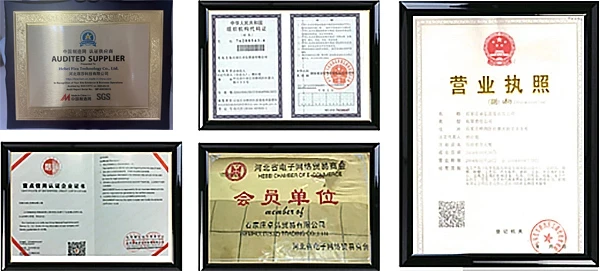



physical water treatment
Physical Water Treatment Principles and Techniques
Water is an essential resource for life, playing a critical role in agriculture, industry, and domestic use. However, the increasing demand for clean water has prompted the need for effective treatment processes to ensure safety and sustainability. One of the most fundamental approaches to water treatment is physical water treatment, which involves the use of physical processes to remove impurities from water. This article explores the principles and techniques involved in physical water treatment.
Principles of Physical Water Treatment
Physical water treatment utilizes straightforward physical processes to separate contaminants and improve the quality of water. It relies on the principles of sedimentation, filtration, coagulation, and flotation. The main goal is to remove suspended solids, microorganisms, and certain dissolved substances from water without the use of chemicals.
1. Sedimentation This is one of the simplest and oldest forms of water treatment. Sedimentation allows gravity to do its work, as heavier particles settle to the bottom of a container over time. In water treatment plants, large basins are often used to facilitate this process. The settled sludge is then removed, leaving clearer water above.
2. Filtration Filtration is a crucial step in water treatment that involves passing water through a porous medium, such as sand or activated carbon, which traps solid particles and impurities. Various forms of filtration are available, including slow sand filters, rapid gravity filters, and membrane filters. The choice of filter depends on the type and level of impurities present in the water.
3. Coagulation Although often associated with chemical treatment, coagulation can also be considered a physical process in specific contexts. This involves adding coagulants (such as aluminum sulfate) to the water, which causes fine particles to clump together into larger aggregates or flocs that can settle more easily during sedimentation.
4. Flotation In flotation processes, air bubbles are introduced into the water, which attach to suspended particles, causing them to rise to the surface. This is particularly useful for removing oil, grease, and other light contaminants. The floating material can then be skimmed off for removal.
Techniques in Physical Water Treatment
Physical water treatment encompasses several techniques, each suitable for different types of contaminants and water quality issues.
1. Gravity Separation
physical water treatment

This technique utilizes gravitational forces for particle separation. It is commonly employed in sedimentation tanks where water is allowed to stand, permitting contaminants to settle. Is essential in the treatment of wastewater and industrial effluents.
2. Rapid Sand Filtration
In this method, water is passed through a bed of sand at high velocity. Sand filters can be cleaned and reused, making them cost-effective and efficient for municipal water treatment.
3. Microfiltration and Ultrafiltration
These membrane filtration techniques use membranes to separate fine particles and microorganisms from water. Microfiltration typically targets larger particles, while ultrafiltration can remove smaller viruses and bacteria. These processes are increasingly used in advanced water treatment plants for both drinking water and wastewater.
4. Dissolved Air Flotation (DAF)
DAF is a effective method for removing suspended solids, oils, and greases. In this process, air is dissolved into water under pressure and then released at atmospheric pressure. The resulting microbubbles attach to solids, causing them to float to the surface.
5. Screening
This technique is often the first step in water treatment, where large debris, such as leaves and plastics, is removed from raw water through physical barriers or screens. It prevents damage to subsequent treatment equipment and enhances overall efficiency.
Conclusion
Physical water treatment plays a vital role in ensuring the safety and quality of water for various applications. By utilizing natural physical processes, this approach not only effectively removes impurities but also minimizes the need for chemical additives. With advancements in technology, such as membrane filtration and flotation systems, physical water treatment continues to evolve, providing innovative solutions to meet global water challenges. As water scarcity and pollution increase, understanding and employing these techniques will be crucial for sustainable water management, ensuring that clean water remains accessible for future generations.
-
Why Sodium Persulfate Is Everywhere NowNewsJul.07,2025
-
Why Polyacrylamide Is in High DemandNewsJul.07,2025
-
Understanding Paint Chemicals and Their ApplicationsNewsJul.07,2025
-
Smart Use Of Mining ChemicalsNewsJul.07,2025
-
Practical Uses of Potassium MonopersulfateNewsJul.07,2025
-
Agrochemicals In Real FarmingNewsJul.07,2025
-
Sodium Chlorite Hot UsesNewsJul.01,2025










